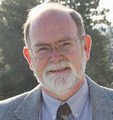Tree Canopy Interception of Rainwater: BC Research Project Fills Gap in Science-Based Understanding
Note to Reader:
In 2011, a TRU-based collaborative was formed in support of research by Masters student Julie Schooling and thesis supervisor Dr. Darryl Carlyle-Moses. Highlights of findings on stemflow processes in semi-arid Kamloops based on the 2012−2013 study can be downloaded HERE, or download the full thesis: The Influence of Tree Traits and Storm Event Characteristics on Stemflow Production from Isolated Deciduous Trees in an Urban Park.
 “Motivated by concern about stream and watershed impacts of urbanization, the Stormwater Trees project embodies systems thinking and a multi-disciplinary approach to addressing an aspect of urban ecology,” says Tom Dickinson, Dean of Science at Thompson Rivers University in Kamloops, BC.
“Motivated by concern about stream and watershed impacts of urbanization, the Stormwater Trees project embodies systems thinking and a multi-disciplinary approach to addressing an aspect of urban ecology,” says Tom Dickinson, Dean of Science at Thompson Rivers University in Kamloops, BC.
Interior Research Complements Coastal Research
“This Interior BC research on deciduous tree traits and meteorological factors influencing stemflow (rainfall funneled to the base of trunks) in urban park trees complements work that was done on  rainfall interception in coastal North Vancouver, BC by Yeganeh Asadian, Dr. Dan Moore, and Dr. Markus Weiler at UBC in 2006−2007,” reports Julie Schooling. To learn about that project, click on North Shore Tree Canopy Rainfall Interception.
rainfall interception in coastal North Vancouver, BC by Yeganeh Asadian, Dr. Dan Moore, and Dr. Markus Weiler at UBC in 2006−2007,” reports Julie Schooling. To learn about that project, click on North Shore Tree Canopy Rainfall Interception.
“The Kamloops study generally confirmed findings of other researchers that high branch angles, smooth bark, and substantial woody infrastructure contribute to high stemflow production. However, it also identified exceptions to general patterns as well as factors that have not previously been analyzed – for example, the role of multiple leaders in a canopy vs. a strong single leader.”
 “Our strongest take-home message is that stemflow is NOT necessarily negligible for these isolated trees, and must be considered in urban forest planning and planting site design,” emphasizes Dr. Darryl Carlyle-Moses.
“Our strongest take-home message is that stemflow is NOT necessarily negligible for these isolated trees, and must be considered in urban forest planning and planting site design,” emphasizes Dr. Darryl Carlyle-Moses.
“This study builds on precedent-setting research in British Columbia, filling gaps in science-based understanding of tree canopy processes and promoting translation of the science to application through tools such as the Tree Canopy Module of the rebuilt Water Balance Model,” concludes Julie Schooling.
About this Community-Based Research
Collaborators in this community-based research included various departments at Thompson Rivers University (TRU), the City of Kamloops, the Partnership for Water Sustainability in BC, the University of Victoria, Urban Systems Ltd., Golder Associates, the Kamloops Naturalist Club, the Real Estate Foundation of BC, TD Friends of the Environment, and the Kamloops Foundation.
The City of Kamloops Perspective:
 Presentations to planning, engineering, parks, and arboriculture staff at the City of Kamloops have already resulted in draft guidelines for appropriate tree selection on unstable sites.
Presentations to planning, engineering, parks, and arboriculture staff at the City of Kamloops have already resulted in draft guidelines for appropriate tree selection on unstable sites.
“From project start-up, the City of Kamloops has shared the team’s vision of shaping day-to-day planning and operational decisions based on the study’s results,” says Greg Houghton, Arboriculture Crew Leader.
A Funder’s Perspective:
 “It is evident that your new and valuable findings will contribute to better decisions in the design and management of urban forests, in Kamloops and beyond,” wrote Leanne Sexsmith, Grants Manager at the Real Estate Foundation of BC upon completion of the study.
“It is evident that your new and valuable findings will contribute to better decisions in the design and management of urban forests, in Kamloops and beyond,” wrote Leanne Sexsmith, Grants Manager at the Real Estate Foundation of BC upon completion of the study.
To Learn More:
Highlights of findings can be downloaded HERE or download the full thesis: The Influence of Tree Traits and Storm Event Characteristics on Stemflow Production from Isolated Deciduous Trees in an Urban Park
To access project information posted on the City of Kamloops website, click on Stormwater Trees.



